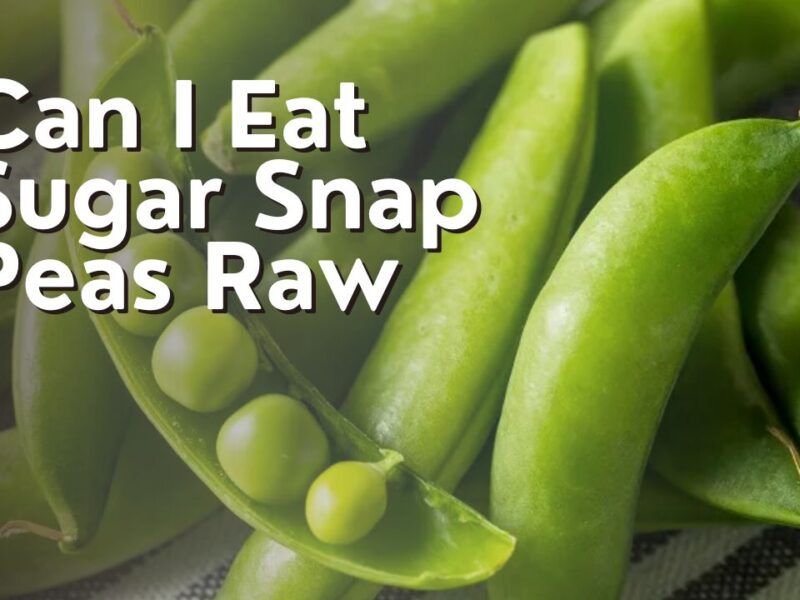Hey there!
Have you ever wondered if it’s safe for dogs to eat tuna straight from a can? Well, I did too, and that’s why I’ve decided to dive into the topic and find out the answer.
In this article, I’ll be exploring the nutritional value of tuna for dogs, the potential benefits, as well as the risks and concerns associated with feeding them this popular fish.
We’ll also touch on mercury levels in tuna and how it can impact our furry friends, as well as allergies and sensitivities that some dogs may have.
Don’t worry though, I’ll also be providing alternative protein sources for dogs and even some homemade tuna treat recipes. But, as always, it’s important to consult with your veterinarian before making any major changes to your dog’s diet.
So, let’s get started and find out if dogs can indeed enjoy a tasty tuna treat!
- Nutritional Value of Tuna for Dogs
- Potential Benefits of Feeding Dogs Tuna
- Risks and Concerns of Feeding Dogs Tuna
- Mercury Levels in Tuna and its Impact on Dogs
- Allergies and Sensitivities to Tuna in Dogs
- Guidelines for Feeding Tuna to Dogs
- Alternative Protein Sources for Dogs
- Homemade Tuna Treat Recipes for Dogs
- Consulting with a Veterinarian about Feeding Tuna to Dogs
- Conclusion: Making an Informed Decision for Your Dog's Diet
- Frequently Asked Questions
- Conclusion
Nutritional Value of Tuna for Dogs
Tuna is packed with nutrients that dogs can benefit from! It is a great source of protein, which is essential for their muscles, tissues, and overall growth.
Additionally, tuna contains omega-3 fatty acids, which promote a healthy coat and skin, reduce inflammation, and support brain function. These fatty acids are crucial for dogs, especially those with allergies or joint problems.
However, it is important to note that not all tuna is created equal. While fresh tuna is generally safe for dogs, canned tuna poses some risks. Canned tuna often contains high levels of sodium, which can lead to dehydration and other health issues in dogs. Moreover, some canned tuna may come packed in oil or brine, which can cause digestive problems or upset stomachs.
To ensure the nutritional benefits without the potential risks, it is best to feed dogs fresh, cooked tuna in moderation. This way, you can control the amount of sodium and avoid any additives that may be harmful. It is also essential to remove any bones and ensure that the tuna is properly cooked to prevent the risk of bacterial contamination.
In conclusion, while tuna can be a nutritious addition to a dog’s diet, it is crucial to be mindful of the type and preparation method. Fresh, cooked tuna in moderation can provide dogs with the nutrients they need, but canned tuna should be avoided due to its potential risks.

Potential Benefits of Feeding Dogs Tuna
Feeding dogs tuna can provide a wide range of advantages that contribute to their overall health. First and foremost, tuna is an excellent source of high-quality protein, which is essential for the development and maintenance of strong muscles.
Additionally, it contains omega-3 fatty acids, which promote a healthy coat and skin, reducing the likelihood of skin allergies and irritations.
Furthermore, the omega-3 fatty acids found in tuna also have anti-inflammatory properties, which can be beneficial for dogs with joint issues, such as arthritis. By incorporating tuna into their diet, you may help alleviate some of the discomfort and improve their mobility.
Moreover, tuna is a good source of essential vitamins and minerals, including vitamin D, vitamin B12, and selenium, all of which play a crucial role in maintaining a healthy immune system.
However, it is important to note that while tuna can provide numerous benefits, it should be given in moderation. Too much tuna can lead to mercury poisoning, which can be harmful to your dog’s health. Therefore, it is recommended to consult with your veterinarian to determine the appropriate amount of tuna to include in your dog’s diet.
So go ahead and treat your furry friend to the occasional can of tuna, knowing that you are contributing to their overall well-being.
Risks and Concerns of Feeding Dogs Tuna
Be cautious with this popular fish treat, as excessive consumption can pose serious health risks for your beloved furry companion. While tuna can provide some nutritional benefits for dogs, there are also potential risks and concerns to consider.
One major concern is the high levels of mercury found in tuna. Mercury is a toxic substance that can accumulate in your dog’s body over time, leading to neurological problems and kidney damage. It is important to note that larger species of tuna, such as albacore, tend to have higher mercury levels than smaller species like skipjack or canned light tuna.
Another concern is the salt content in canned tuna. Dogs have different salt requirements than humans, and excessive salt intake can lead to dehydration, electrolyte imbalances, and even salt poisoning. Canned tuna often contains added salt for preservation purposes, so it is important to choose low-sodium options or rinse the tuna before feeding it to your dog.
To provide a comprehensive overview of the risks and concerns of feeding dogs tuna, I have created a table below:
| Risk/Concern | Explanation |
|---|---|
| High mercury levels | Tuna can contain high levels of mercury,
which can be toxic to dogs and lead to neurological problems and kidney damage. Larger species of tuna tend to have higher mercury levels. |
| Excessive salt intake | Dogs have different salt requirements than humans,
and excessive salt intake can lead to dehydration, electrolyte imbalances, and salt poisoning. Canned tuna often contains added salt, so it is important to choose low-sodium options or rinse the tuna. |
In conclusion, while tuna can be a tasty and nutritious treat for dogs in moderation, it is crucial to be aware of the risks and concerns associated with its consumption. It is always best to consult with your veterinarian to determine the appropriate amount and frequency of feeding tuna to your furry friend.
Mercury Levels in Tuna and its Impact on Dogs
Ensure your furry companion stays healthy by understanding how the mercury levels in their favorite fish treat can impact them. While tuna is a delicious and nutritious seafood option for humans, it can pose some risks for dogs due to its high mercury content.
Mercury is a naturally occurring element that can be found in the environment, including bodies of water where fish like tuna reside. When consumed in high amounts, mercury can be toxic to both humans and animals. Dogs are especially susceptible to mercury poisoning because their bodies are smaller and cannot process them as efficiently as humans can.
Mercury poisoning in dogs can lead to various health issues, including neurological problems, kidney damage, and even death in severe cases. The symptoms may include loss of coordination, muscle weakness, tremors, and difficulty breathing.
To minimize the risks associated with mercury, it is essential to limit your dog’s consumption of tuna. While an occasional small amount may not cause harm, frequent or excessive consumption should be avoided. It is also crucial to choose lower mercury fish options when feeding your dog, such as salmon or whitefish.
By being aware of the mercury levels in tuna and taking necessary precautions, you can ensure your dog’s well-being and continue to enjoy their company for years to come.
Allergies and Sensitivities to Tuna in Dogs
Don’t let your pup miss out on the deliciousness of tuna due to potential allergies or sensitivities. While tuna can be a great source of protein and omega-3 fatty acids for dogs, it’s important to be aware that some dogs may have adverse reactions to this fish.
Just like humans, dogs can develop allergies or sensitivities to certain foods, including tuna.
If your dog has never had tuna before, it’s best to introduce it slowly into their diet. Start by giving them a small amount and monitor their reaction. Look out for any signs of allergies such as itching, redness, swelling, or gastrointestinal issues like vomiting or diarrhea. If you notice any of these symptoms, it’s important to consult with your veterinarian.
It’s also worth noting that some dogs may be sensitive to the high levels of sodium found in canned tuna. Excessive sodium intake can lead to dehydration and other health problems. To mitigate this, you can opt for low-sodium or no-salt-added tuna options.
In conclusion, while some dogs may have allergies or sensitivities to tuna, many can enjoy this tasty fish as part of a balanced diet. Just make sure to introduce it slowly and monitor your pup’s reaction.

Guidelines for Feeding Tuna to Dogs
Introducing tuna into your pup’s diet gradually and monitoring their reaction is crucial for a positive and healthy feeding experience. It’s important to follow some guidelines to ensure their well-being.
Firstly, only feed your dog plain, cooked tuna. Avoid giving them tuna packed in oil or with added seasonings, as these can be harmful. Plain tuna provides protein, omega-3 fatty acids, and essential nutrients that can benefit your furry friend’s overall health.
When introducing tuna to your pup, start with small portions and observe how they react. Some dogs may have sensitivities or allergies to fish, so watch for any signs of digestive upset, such as vomiting or diarrhea. If your dog shows any adverse reactions, consult with your veterinarian before continuing to feed them tuna.
Additionally, remember that moderation is key. While tuna can be a healthy addition to your dog’s diet, it should not make up the majority of their meals. Tuna should be given as an occasional treat or mixed with their regular food to add some variety.
By following these guidelines, you can safely incorporate tuna into your dog’s diet and provide them with a delicious and nutritious meal option.
Alternative Protein Sources for Dogs
If your furry friend is looking for some variety in their meals, there are plenty of other protein sources that can be a delicious and nutritious addition to their diet. While tuna can be a great treat for dogs every now and then, it’s important to remember that it should not be their main source of protein. Dogs require a balanced diet with a variety of nutrients, and relying solely on tuna can lead to nutritional deficiencies.
One alternative protein source for dogs is chicken. It is a lean meat that is high in protein and low in fat, making it a healthy option for dogs. Chicken can be cooked and served plain or mixed with other ingredients to create a tasty meal.
Another option is beef, which is also high in protein and provides essential amino acids. Just make sure to choose lean cuts and remove any excess fat before feeding it to your dog.
Fish is another great alternative protein source. Salmon, for example, is rich in omega-3 fatty acids, which can benefit your dog’s skin and coat health. However, it’s important to cook fish thoroughly to kill any potential parasites. Other fish options include whitefish and sardines.
If you’re looking for a plant-based protein source, consider incorporating beans and lentils into your dog’s diet. These legumes are packed with protein and fiber, and can be easily cooked and added to their meals.
In conclusion, while tuna can be a tasty treat for dogs, it should not be their main source of protein. There are plenty of other protein sources, such as chicken, beef, fish, and legumes, that can provide a balanced and nutritious diet for your furry friend.
Homemade Tuna Treat Recipes for Dogs
After exploring alternative protein sources for dogs, I’m excited to dive into the world of homemade tuna treat recipes. As a dog owner, I always strive to provide my furry friend with healthy and delicious snacks, and tuna seems like a great option.
- Tuna and Sweet Potato Bites: Start by mixing mashed sweet potatoes with canned tuna in a bowl. Shape the mixture into bite-sized balls and bake them in the oven until they are firm. These treats are not only packed with protein but also provide essential vitamins and minerals from the sweet potatoes.
- Tuna and Carrot Cookies: Combine grated carrots with canned tuna and whole wheat flour. Roll out the dough and cut it into fun shapes using a cookie cutter. These crunchy cookies are not only a tasty treat but also promote good dental health.
- Tuna and Blueberry Frozen Pops: Blend canned tuna with fresh blueberries and plain yogurt. Pour the mixture into ice cube trays or silicone molds and freeze until solid. These frozen pops are a refreshing and nutritious snack, perfect for those hot summer days.
By incorporating homemade tuna treats into my dog’s diet, I can provide a variety of flavors while ensuring he receives the necessary nutrients. Plus, seeing his tail wag in delight makes it all worthwhile.
Consulting with a Veterinarian about Feeding Tuna to Dogs
When consulting with a veterinarian about feeding tuna to your furry friend, it’s important to discuss any potential risks or concerns. While tuna can be a healthy and delicious treat for dogs, there are a few things to consider.
First and foremost, it’s crucial to ensure that the tuna is cooked thoroughly and free from any seasonings or additives that may be harmful to dogs. Raw or undercooked tuna can harbor harmful bacteria and parasites that can cause digestive issues or even more serious health problems.
Additionally, it’s important to keep in mind that tuna is a fish that contains high levels of mercury. Mercury can be toxic to dogs if consumed in large quantities over time. Therefore, it’s essential to moderate the amount of tuna your dog consumes and not make it a regular part of their diet. Consulting with a veterinarian will help you determine the appropriate portion size and frequency of feeding tuna to your dog.
Furthermore, if your dog has any existing health conditions, such as kidney or liver problems, it’s crucial to consult with a veterinarian before introducing tuna into their diet. Certain health conditions may make it necessary to avoid tuna altogether or limit its consumption.
Overall, while tuna can be a tasty and nutritious treat for dogs, it’s essential to consult with a veterinarian to ensure the safety and well-being of your furry friend.
Conclusion: Making an Informed Decision for Your Dog’s Diet
Ultimately, it’s crucial to make an informed decision about your furry friend’s diet to ensure their long-term health and happiness. When it comes to feeding tuna to dogs, consulting with a veterinarian can provide valuable insights. They can assess your dog’s specific needs and offer recommendations based on their individual health conditions, age, and breed.
While some dogs may be able to tolerate small amounts of tuna, it’s important to note that it should not be a staple in their diet. Tuna can be a good source of protein and omega-3 fatty acids for dogs; however, it also contains high levels of mercury, which can be harmful in large quantities. Additionally, most canned tuna contains added salt and oils that may not be suitable for your dog’s digestive system. Feeding your dog tuna out of a can regularly can lead to health issues such as mercury poisoning, digestive problems, and even pancreatitis.
Instead of relying on tuna as a primary protein source, it’s best to opt for dog-friendly alternatives such as lean meats, fish specifically designed for dogs, or high-quality commercial dog food that meets their nutritional needs. Remember, every dog is unique, and what works for one may not work for another. So, trust your veterinarian’s expertise and work together to create a balanced and nutritious diet plan for your canine companion.
Frequently Asked Questions
Can dogs eat other types of fish besides tuna?
Yes, dogs can eat other types of fish besides tuna. However, it’s important to ensure the fish is fully cooked, boneless, and free from any seasonings or additives that could be harmful to dogs.
What are some alternative protein sources for dogs besides tuna?
Some alternative protein sources for dogs besides tuna include chicken, beef, lamb, and turkey. These meats can provide essential nutrients for dogs and can be prepared in various ways for a balanced diet.
How can I make homemade tuna treats for my dog?
To make homemade tuna treats for my dog, I mix canned tuna with mashed sweet potatoes, eggs, and whole wheat flour. I shape them into small balls and bake at 350 degrees for 15 minutes.
Should I consult with a veterinarian before feeding tuna to my dog?
Yes, it is always a good idea to consult with a veterinarian before feeding tuna to your dog. They can provide guidance on portion sizes, potential allergies, and any other health concerns.
How do I make an informed decision about my dog’s diet?
To make an informed decision about my dog’s diet, I research reputable sources, consult with a veterinarian, and consider my dog’s specific nutritional needs and any potential health concerns.
Conclusion
In conclusion, after considering the nutritional value, potential benefits, risks, and concerns of feeding dogs tuna, it is important to make an informed decision about including it in their diet.
While tuna can provide various nutrients and be a tasty treat for dogs, it is crucial to be aware of mercury levels and potential allergies.
Consulting with a veterinarian is essential to determine if tuna is suitable for your dog and to explore alternative protein sources if needed.
Ultimately, prioritizing your dog’s health and well-being should guide your decision-making process.


